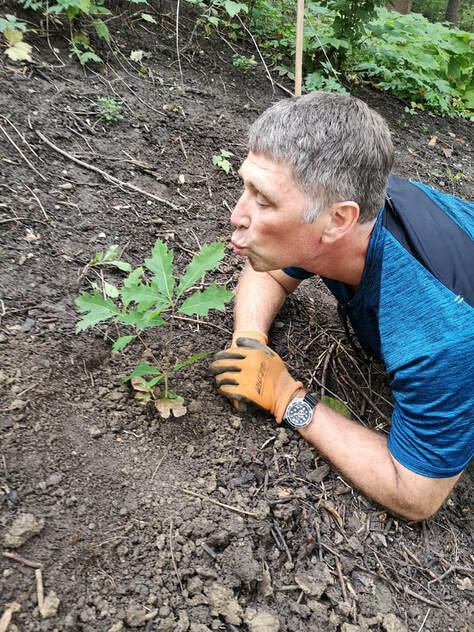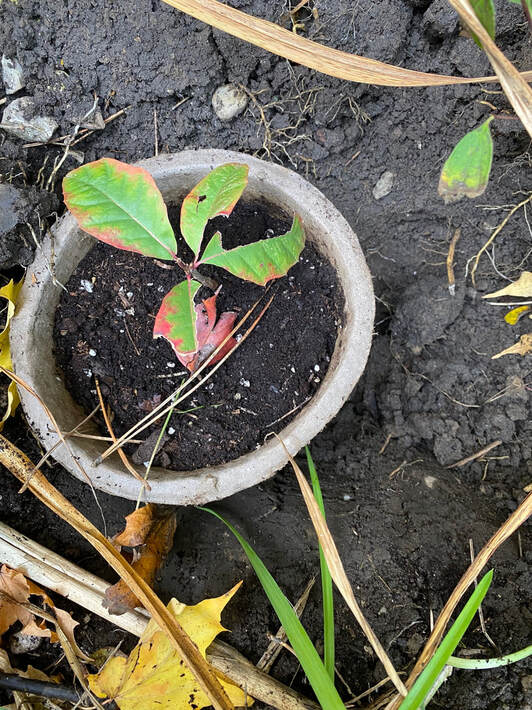You have carefully nurtured your sapling and now you are ready to plant it! Hopefully you will be able to visit your tree from time to time to see it grow and watch over its development. Where should you plant it?
Planting Your Sapling in its Forever Home
Seeds to Saplings suggests you check some potential local sites to plant your sapling. Of course you must check with the owners of the site first. You, your teacher and your parents may discuss some of the locations suggested in this list:
And you could try connecting with:
- your neighbourhood (see any places that could use a tree?)
- schools
- companies
- condo buildings
- golf courses
- cemeteries
- community centres
- religious buildings (synagogues, churches, temples, etc.)
- new developments (outside of the City)
- universities and colleges
- hospitals
And you could try connecting with:
- a neighbourhood developer
- your Councillor
- Park People (a national organisation that works with communities to enhance park space)
You can choose to plant your sapling outside in the spring or the late fall. Here are the main things to consider when choosing your site to ensure your tree grows big and healthy:
You must always have permission before planting. Explain the importance of planting a tree when you are talking to a property owner. In that conversation you may want to talk about how important native trees are to local ecosystems, aiding biodiversity and providing food and shelter for many plants, animals and fungi. They are also allies in helping us fight the climate emergency.
Your tree will need care and monitoring. In particular it will need good watering until it is well established. Perhaps you can help the property owner with watering. Have fun finding a place for your tree to grow and eventually produce its first flowers and seeds. Hopefully you will still be visiting it when that happens!
- Mature northern red oaks can grow to about 25m tall so give them plenty of room to grow. Do not plant next to or close to a building or overhead wires or in a high traffic area.
- Northern red oaks like 6-8 hours of sun a day but need some protection from strong sun in the first couple of years. In the forest a sapling would be protected by the tall, established trees around it as it grows.
- Give your sapling some room from other plants. They do not like to compete for space!
- Red oaks do not like heavy, wet, poorly drained soils but can tolerate rocky, sandy soils.
You must always have permission before planting. Explain the importance of planting a tree when you are talking to a property owner. In that conversation you may want to talk about how important native trees are to local ecosystems, aiding biodiversity and providing food and shelter for many plants, animals and fungi. They are also allies in helping us fight the climate emergency.
Your tree will need care and monitoring. In particular it will need good watering until it is well established. Perhaps you can help the property owner with watering. Have fun finding a place for your tree to grow and eventually produce its first flowers and seeds. Hopefully you will still be visiting it when that happens!
When you are ready to plant
- Handle the sapling with great care so as to not disturb either the root system (which is extremely fragile), or, if it is still attached, the acorn.
- If your sapling is in a biodegradable pot, gently cut away the bottom of the pot. Plant it directly into the ground in a hole just deep enough that the ground is level with the soil in the pot. If not, dig a hole in the ground a little wider than the pot but NO DEEPER. Oaks hate being planted too deep! The soil should be at the same level as where the roots meet the stem.
- If using a non-biodegradable pot, remove the sapling together with its soil from the pot, taking great care not to disturb any of the root system including the very fine hairs. Hold it slightly above the hole. Then back-fill the soil very carefully around the plant’s soil. (It is very helpful if a buddy can do this while you carefully hold the plant.)
- Press gently but firmly on the soil to ensure air pockets are pressed out and the plant is firmly in place. Keep adding soil to the hole until it is at the same level as the pot’s soil.
- Slowly add 2 litres (½ gallon) of water while tamping down the soil to make sure the plant does not get buried or sink below the point where the root system meets the stem.
- Do not fertilize the sapling as this will only encourage leaf growth at the expense of root growth, which is more important at this early stage.
Protecting your saplingTo protect your precious sapling from critters eating its leaves or chewing its bark, you can encircle it with a plastic tree-trunk protector, a tomato cage or other wire structure (see photo), or three 2 x 2 inch wooden stakes wrapped with plastic poultry netting. All these are available from garden centres or hardware stores like Home Depot or Canadian Tire. This system provides support for the stem from wind and can then even be wrapped with burlap in the winter to shield from drying winter winds.
You can add a “volcano” shaped layer of wood chip mulch (a cone with a hollow in the top around the stem). This helps fight off weeds and retains moisture. Make sure the mulch does not touch the stem as this could cause insect infestation or rot. |
Checking on your sapling
If you plant somewhere convenient, and depending on the weather, you can pamper your baby and water it every 2-3 days with 2L (1/2 gallon) of water for the next couple of weeks. If you plant somewhere not so close by and you cannot go back to water as frequently, make sure to water well when planting and leave the watering to Nature; unless there is a heatwave it will likely do just fine. Check to make sure the soil allows for good drainage. If the soil feels very wet do not water. If necessary, protect it from all-day sun by placing some kind of cover like cheesecloth or weed cloth over the protector system for ½ day when sun is at its strongest.
After a few weeks you will only need to make sure your sapling has had a good watering once a week: 1-2 gallons depending on the weather.
After a few weeks you will only need to make sure your sapling has had a good watering once a week: 1-2 gallons depending on the weather.
Share your hard work with us!If you have any feedback on where you decided to plant your tree or the process of selecting a planting site, S2S would love to hear from you. If you are able to take a photo of your tree when you plant it and share it with us (s2scanada@seedstosaplings.ca) that would be amazing!
Good luck with the next part of your tree journey! |











